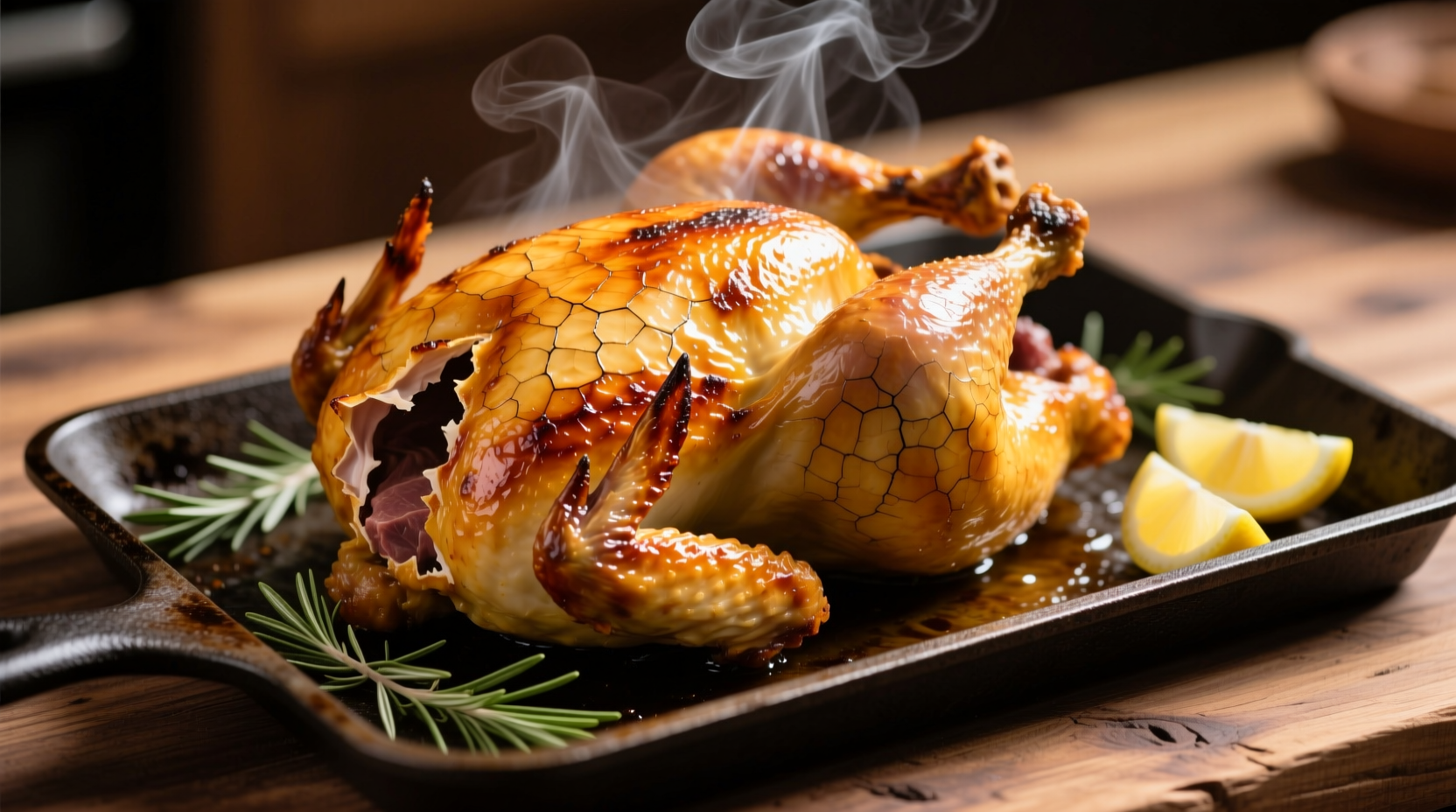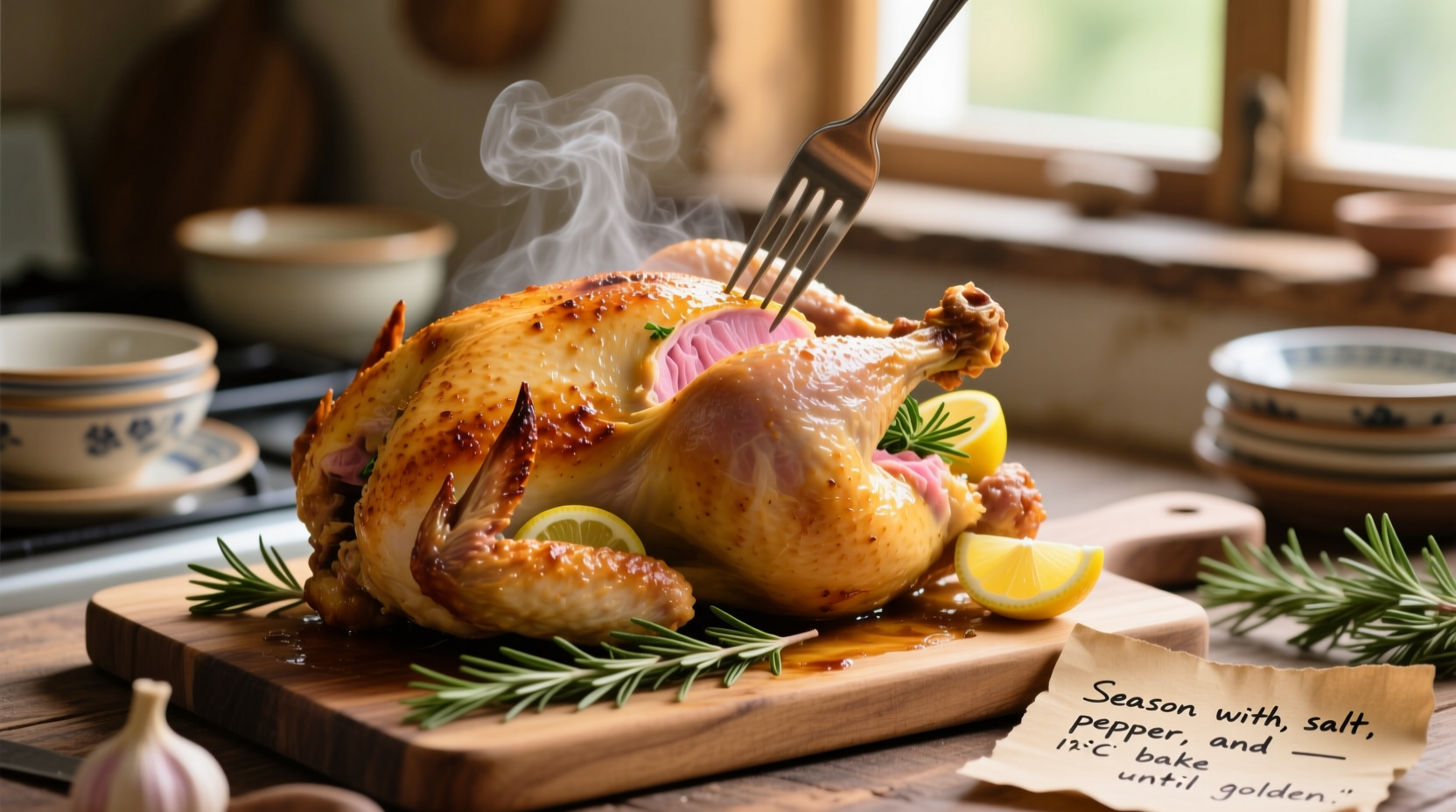Nothing beats the aroma of perfectly roasted chicken filling your kitchen. Yet many home cooks struggle with dry, unevenly cooked poultry that lacks that professional-quality finish. The secret isn't complicated equipment—it's understanding the science behind oven cooking and following precise temperature guidelines that transform ordinary chicken into extraordinary meals.
Why Oven Chicken Often Fails (And How to Fix It)
Most home cooks make three critical mistakes: under-seasoning, incorrect oven temperature, and skipping the crucial resting period. Chicken breasts cooked at 350°F often dry out before reaching safe temperatures, while overcrowded pans create steam instead of crisp skin. The solution lies in proper preparation and understanding how different cuts behave in dry heat.
Essential Preparation: Setting Up for Success
Start with quality ingredients and proper tools. Choose fresh chicken with firm texture and no off-odors. Pat the meat thoroughly dry with paper towels—moisture is the enemy of crispy skin. For even cooking, bring chicken to room temperature for 20-30 minutes before baking. This simple step prevents the outside from overcooking while the inside reaches safe temperatures.
Use a heavy-duty rimmed baking sheet or cast iron skillet for optimal heat distribution. Lightly oil the pan surface to prevent sticking but avoid excessive oil that causes splattering. Position your oven rack in the middle position for consistent airflow around the chicken.

Cooking Time and Temperature Guidelines
Preheat your oven to 400°F (204°C) for most chicken cuts. Higher temperatures create better browning through the Maillard reaction while locking in juices. Lower temperatures (325°F) work better for whole chickens that need longer cooking without burning.
| Chicken Cut | Weight | Temperature | Cooking Time | Rest Time |
|---|---|---|---|---|
| Boneless breasts | 6-8 oz | 400°F | 20-25 min | 5 min |
| Bone-in breasts | 10-12 oz | 400°F | 30-35 min | 7 min |
| Thighs (bone-in) | 6-8 oz | 400°F | 35-40 min | 5 min |
| Whole chicken | 3-4 lbs | 375°F | 60-75 min | 15 min |
These cooking times come from USDA Food Safety guidelines which recommend poultry reach 165°F (74°C) internal temperature. Use an instant-read thermometer inserted into the thickest part, avoiding bone contact. The American Institute for Cancer Research confirms this temperature destroys harmful bacteria while preserving moisture when proper resting follows.
Pro Techniques for Perfect Results Every Time
Season generously with salt at least 45 minutes before cooking—this allows penetration beyond the surface. For extra flavor, create a simple rub with paprika, garlic powder, and dried herbs. Tuck wing tips under the breast to prevent burning. Place lemon slices or fresh herbs under the chicken for aromatic steam that infuses flavor without adding moisture to the skin.
For crisper skin, position chicken skin-side up on a wire rack set inside your baking sheet. This elevates the meat, allowing hot air to circulate completely. Baste once halfway through cooking with pan drippings or melted butter, but avoid frequent opening of the oven door which causes temperature fluctuations.
Troubleshooting Common Problems
Dry chicken? You likely overcooked it or skipped resting time. Even properly timed cooking can yield dry results if you cut immediately—those precious juices need time to redistribute.
Pale, soft skin? Your oven temperature was too low or you didn't dry the surface sufficiently. Next time, increase temperature by 25°F and ensure thorough patting dry before seasoning.
Uneven cooking? Rotate the pan halfway through cooking. Ovens often have hot spots that cause one side to cook faster. Using an oven thermometer helps verify actual temperature versus dial setting.
Flavor Variations to Elevate Your Chicken
Transform basic roasted chicken with global flavors. Try a Mediterranean version with olive oil, lemon zest, oregano, and garlic. For Asian-inspired chicken, use soy sauce, ginger, sesame oil, and a touch of honey. The French technique of au jus involves roasting with shallots and white wine for a natural pan sauce.
Remember that acidic ingredients like vinegar or citrus juice can start to "cook" the chicken surface if applied too early. Add these during the last 15 minutes of cooking to prevent texture changes.
Proper Storage and Reheating
Cool cooked chicken within two hours and store in airtight containers for up to four days. For best reheating results, place chicken in a covered dish with a splash of broth or water, then warm at 300°F until heated through. This gentle method prevents further moisture loss. Avoid microwaving whole pieces as it creates uneven heating and rubbery texture.
Frequently Asked Questions
Can I cook frozen chicken in the oven? Yes, but increase cooking time by 50% and check temperature carefully. The USDA recommends adding 1.5 times the normal cooking duration for frozen poultry to ensure safe internal temperatures are reached throughout.
Why does my chicken stick to the pan? Insufficient preheating or premature flipping causes sticking. Ensure your pan is properly preheated and allow chicken to develop a crust before attempting to move it. Non-stick pans require less oil but still need proper preheating.
Should I cover chicken while baking? Generally no—covering creates steam that prevents browning. The exception is whole chickens during initial cooking to prevent breast dryness, then uncover for final crisping. Boneless breasts benefit from occasional basting rather than covering.











 浙公网安备
33010002000092号
浙公网安备
33010002000092号 浙B2-20120091-4
浙B2-20120091-4